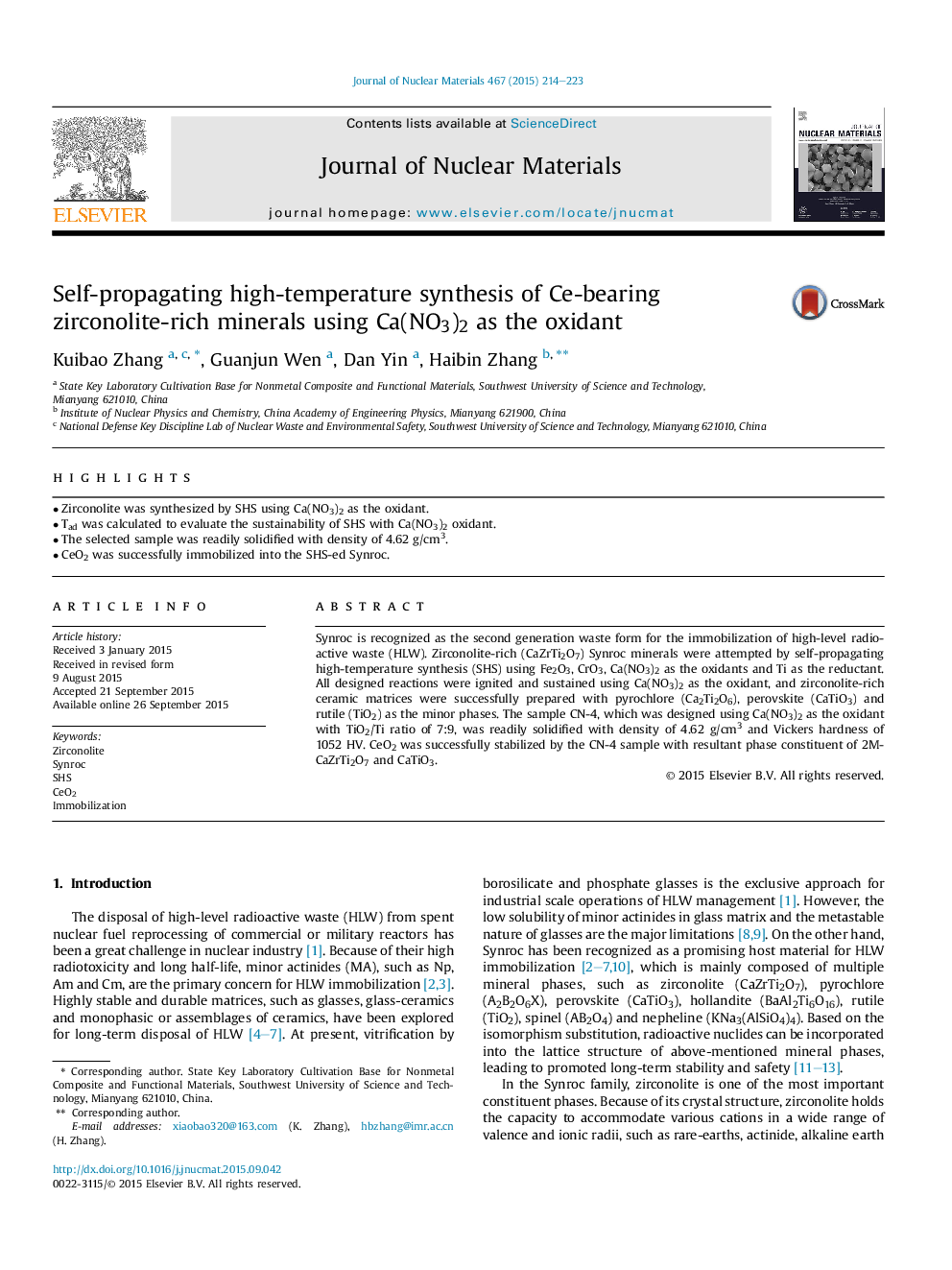| Article ID | Journal | Published Year | Pages | File Type |
|---|---|---|---|---|
| 1564877 | Journal of Nuclear Materials | 2015 | 10 Pages |
Abstract
Synroc is recognized as the second generation waste form for the immobilization of high-level radioactive waste (HLW). Zirconolite-rich (CaZrTi2O7) Synroc minerals were attempted by self-propagating high-temperature synthesis (SHS) using Fe2O3, CrO3, Ca(NO3)2 as the oxidants and Ti as the reductant. All designed reactions were ignited and sustained using Ca(NO3)2 as the oxidant, and zirconolite-rich ceramic matrices were successfully prepared with pyrochlore (Ca2Ti2O6), perovskite (CaTiO3) and rutile (TiO2) as the minor phases. The sample CN-4, which was designed using Ca(NO3)2 as the oxidant with TiO2/Ti ratio of 7:9, was readily solidified with density of 4.62Â g/cm3 and Vickers hardness of 1052Â HV. CeO2 was successfully stabilized by the CN-4 sample with resultant phase constituent of 2M-CaZrTi2O7 and CaTiO3.
Related Topics
Physical Sciences and Engineering
Energy
Nuclear Energy and Engineering
Authors
Kuibao Zhang, Guanjun Wen, Dan Yin, Haibin Zhang,
